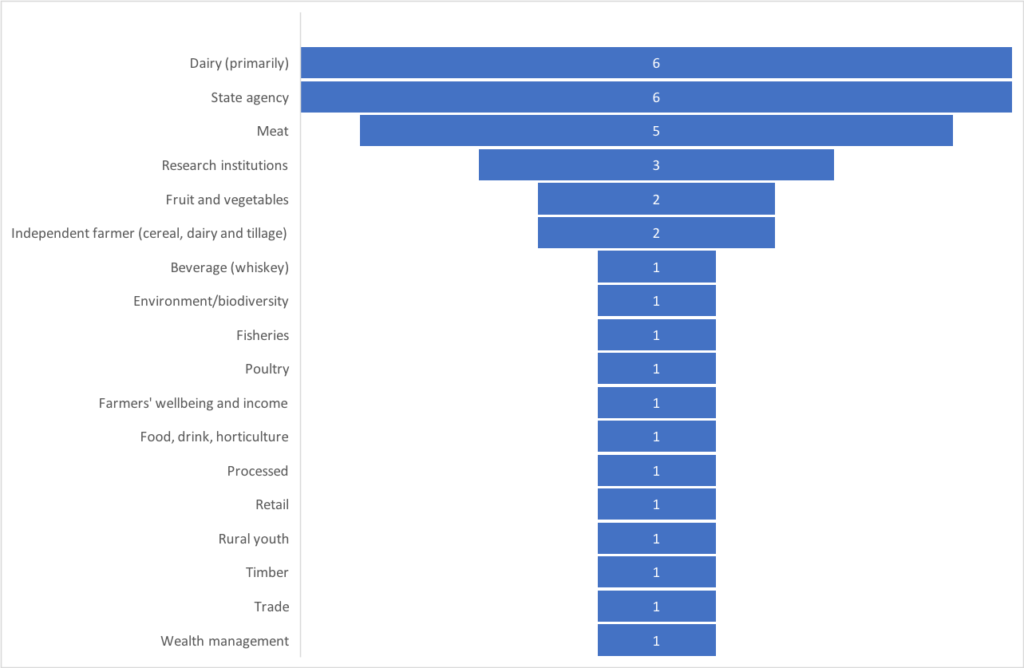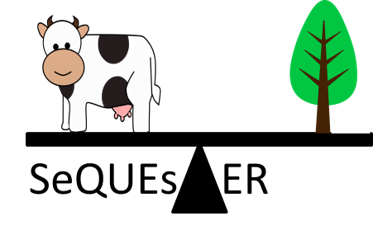Shaping Ireland’s Sustainable Future: a call for diversity of representation in Ireland’s Agri-food strategy
In August this year, the Irish Department of Agriculture, Food and the Marine (DAFM) launched the Agri-food strategy 2030 consultation process.
The Agri-food 2030 strategy will build off its predecessor, Foodwise 2025, which set out a ten-year plan for the agri-food sector. The DAFM is bound by EU Directive 2001/42/EC to conduct a consultation process as part of the Strategic Environmental Assessment: ‘the environmental report and the opinions expressed by the relevant authorities and the public […] should be taken into account during the preparation of the plan or programme and before its adoption or submission to the legislative procedure’.
Agriculture is complex and intricately connected with diverse sectors, from health and nutrition to the environment and climate change; and many people have a significant stake in these systems. To develop the EU Farm to Fork strategy, the European Commission consulted with stakeholders from the science, policy, industry and civil society communities. The strategy considers its effects on citizens, consumers, retailers, food producers, farmers, wholesale, hospitality, and food services.
A consultation process was also carried out for the Food Wise 2025 and the final strategy was ‘agreed upon by 35 stakeholders from the agri-food sector’ which formed the 2025 Agri-Food Strategy Committee membership. Ideally, these stakeholders would be representative of all stakeholders in the agri-food sector. The Food Wise 2025 strategy identified the following sectors of relevance for its report, as outlined in the table of contents: 1
- Dairy
- Meat
- Prepared consumer foods
- Seafood sector
- Whiskey and craft beer
- Horticulture
- Forestry
- Tillage
However, important representatives are absent from this list and even within this categorisation, some sectors are disproportionately represented on the Food Wise 2025 strategy’s committee. For example, the only representative from the forestry sector was a timber company, whose interests are unlikely to align with advocates of forest ecosystems or biodiversity. This is particularly relevant in light of the recent increase in emissions reduction targets from 40% to 55% set by EU President von der Leyen in her State of the European Union speech, as forestry is likely to play a major role in Europe’s (and Ireland’s) low carbon future.

Figure 1: Sectoral breakdown of Food Wise 2025 Committee Members
Source: Food Wise Strategy 2025 2
Further, conspicuously absent from the 2025 Agri-Food Strategy Committee are representatives of permanent crops and nutrition-related sectors, highlighted in Figure 1, above. Just two small-scale farmers were on the committee and the fruit and vegetable sector were represented by large companies with specific interests (e.g. Keelings). Yet, ‘prepared consumer foods’ (i.e. processed foods with fewer nutrients and higher health risks than fresh produce) is represented, while the only organisations which could tenuously be considered nutrition-related are the transnational corporations, for example, Glanbia which self-identifies as a ‘global nutrition group’. Since 2014, Glanbia has been shifting its identity from being a dairy ‘giant’ to a including a nutrition portfolio. The interests of such a group may not align with a representative from, for example, the public health sector.
What is being produced – and how – will determine what’s made available on the shelves for consumers. In Ireland, just 2% of crop production is dedicated to fresh vegetables3 despite the value of these in providing key micronutrients and the Irish Health Service Executive’s recommendation to increase fruit and vegetable servings to up to seven per day; and 0.3% of crop production is dedicated to ‘permanent crops for human consumption’ which generally yield a higher added value per hectare than annual crops and play an important role in shaping the rural landscape and helping to balance agriculture within the environment. Instead, of the agricultural area that’s not being used for livestock purposes more than 95% of crop production is dedicated to cereals that are annual plants, yielding grains used for food, feed, seed and industrial purposes.
Space needs to be created within decision-making making processes, including committees, for more inclusive and diverse expertise that bring a comprehensive overview of the needs of the Irish citizens, communities, landscapes, and environments. The strategy should consider the stakeholders beyond the ‘consumer’ and ‘producer’ binary, to incorporate the complex socio-environmental issues associated with the agri-food industry. Figure 2, below, highlights the disproportionate private sector representation. Further, 77% of the committee members were men.4

Source: Food Wise Strategy 2025 and author’s calculations
Globally, food systems require transformative action if they’re to contribute to goals of healthy people and planet. A transition to a sustainable food system in Ireland, in line with national and EU priorities, needs input from a much greater diversity of stakeholders and sectors than demonstrated during the creation of Food Wise 2025 strategy.
Ireland’s new agri-food strategy needs to provide more space for voices from the areas we need to foster and should put much greater efforts to ensuring that the composition of Irish society is reflected in strategic decisions. Alternative and fresh perspectives are needed to develop innovative approaches to sustainable food systems, which means engaging with players that haven’t typically been involved in the policy discourse.
Although private sector involvement is crucial for systemic transformation industry players also promote foods that are not conducive to healthy diets and exploit natural resources. Including smaller businesses – particularly those based on sustainable business models – in Ireland’s agri-food strategy development is one way of addressing this. The recent GLOPAN Foresight 2.0 report highlights that a transition to sustainable food systems needs to build engagement and momentum across all stakeholder groups in the food system, including national, regional, and local dialogues; and emphasises the need for transparency and ownership of decisions made. In particular, the report highlights the importance of civil society and advocate organisation to leverage change in business and to hold policy-makers accountable.
Nutrition and nature should be central to agriculture and food policies, and diversity should be a fundamental component of these policies. Policies and actions should be evaluated based on their contribution to nourishing a healthy planet and people. The new strategy could leverage the momentum of President von der Leyen’s ambitious emissions reductions targets to ensure sustainable agricultural practices are at the heart of the new strategy .
About the Author

Sinead is an independent consultant and Research Affiliate to the Cambridge Central Asia Forum. Her research aims to understand how complexity sciences can be applied to policies relating to food systems and climate justice. She’s worked as Expert for the EU Economic and Social Committee on climate justice and for the European Commission in assessing citizen-driven food system projects in European cities. As Research Affiliate with the Cambridge Central Asia Forum, she leads and contributes to research identifying policies and strategies to bolster environmental, agricultural, and collective action across Central Asian countries.
1 A similar sector breakdown was seen at the Food Wise 2025 conference in 2017: https://www.agriculture.gov.ie/foodwise2025/foodwiseconference04december2017/foodwiseconferenceprogramme/
2 State agencies include the following sectoral focusses: dairy, environment, fisheries, and business; research institutions include the following sectoral focusses: food science, health, and business.
3 Includes all brassicas, leafy and stalked vegetables, vegetables cultivated for fruit, root, tuber and bulb vegetables, fresh pulses, other vegetables harvested fresh (not dry) and strawberries.
4 The committee was composed of 27 men and 8 women
